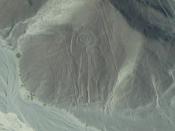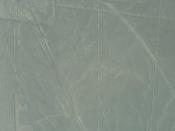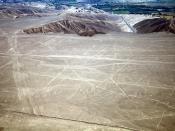The Nazca plains lie between the great Andes Mountains and the Peruvian coast. Along with many thousands of lines on the Nazca plains, pictograms of animals complete the decoration that the ancient Incan Empire created to honor the gods of the sky.
"The designs range from abstract shapes, runway like trapezoids and long, narrow triangles to colossal images of various animals including 18 different kinds of birds, a monkey, a spider, a whale, fish, lizards (some of which have been found to conform to various bright and familiar constellations) ~ and a curious figure known as "The Astronaut" which really resembles little else." (Spooner)
Many UFO researchers believe that the lines and the pictograms are landing fields and landing markers for extraterrestrial visitors. However, many anthropologists believe that these are only ceremonial or astronomical markings. I will attempt to prove that the Nazca plains are in no way related to extraterrestrial encounters.
Located on a wide, arid plain near the coastal city of Nazca in the Peruvian desert, about 320 kilometers south of Lima, lies the Nazca Plains, between the Inca and Nasca valleys. Over this stretch of land, that measures 60 kilometers long and 2 kilometers wide, is a collection of amazingly professional lines formed into the sand in giant geometric shapes. Embedded within some of the shapes are shards of ancient Nazcan pottery, which carbon date to between 350 BC and 600 AD. Although the placement of the stones themselves cannot yet be dated, we can be sure they are at least 1400 years old. Many of these pictograms contain complex geometric patterns and some even form shapes of animals and beasts that can only be full appreciated from looking at them from the sky.
"The figures come in two types: biomorphs and geoglyphs. The biomorphs are some...


